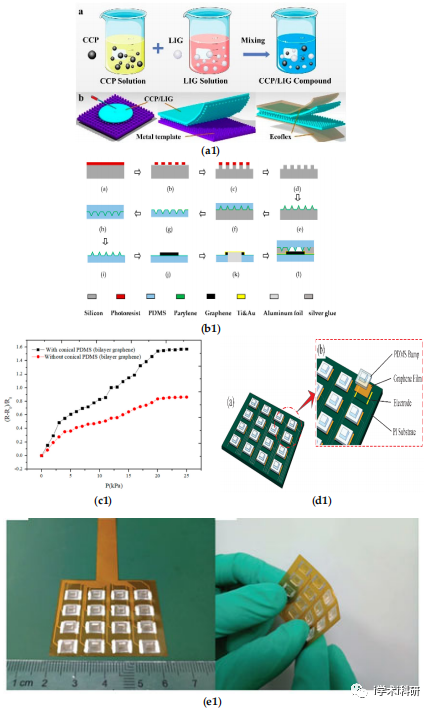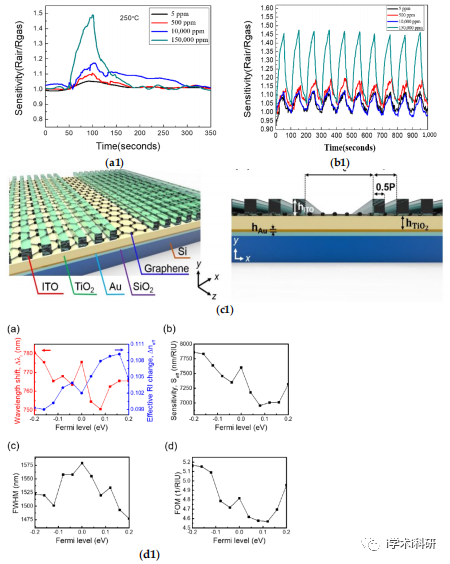Overview of Graphene Applications in Sensors
Research Background
Sensors are devices that convert received information into electrical or other output signals. In today’s smart, digital, and interconnected world, sensors have become essential for data acquisition. The performance of a sensor largely depends on its sensitive components, which directly impact its precision, sensitivity, and detection range. Sensors have applications in biomedicine, flexible pressure sensing, photoelectrochemistry, and more, making significant contributions to modern technological advancements.
Graphene, a single-layer planar film with a hexagonal lattice of carbon atoms, has captured attention due to its unique electrical and mechanical properties. Among its promising applications, sensors are a standout. High-quality graphene films can be produced via methods like chemical exfoliation, chemical vapor deposition (CVD), mechanical cleavage, and other chemical synthesis techniques, with CVD being notable for low-cost, scalable production. Composite materials, combining graphene with other materials, are also developed to harness multiple advantageous properties, improving sensor sensitivity and flexibility and reducing response times. However, choosing suitable graphene-based materials for specific sensor applications remains a challenge.
Research Achievements

The advancement of graphene-based materials has led to a new generation of sensors, significantly impacting scientific research and the consumer market. Over the past decade, the demand for higher sensor precision, reliability, and durability has driven innovation in graphene sensor development. Thanks to graphene’s unique properties, researchers have achieved high-performance sensor applications in biomedicine, photoelectrochemistry, and flexible pressure sensing, with practical examples demonstrating these applications.
Professor Jihong Liu from Northeastern University recently highlighted graphene’s role in these fields and addressed challenges in its sensor applications. The development of virus sensors during the COVID-19 pandemic has also showcased graphene’s potential, as these sensors offer reliable, accurate signal detection, providing valuable insights for sensor design and material selection. This research was published under the title Applications of Graphene-Based Materials in Sensors: A Review in the journal Micromachines.
Illustrated Guide

- Figure 1. Graphene Biosensor Applications
- (a) Structure of graphene quantum dots (GQDs) in biomedical sensors.
- (b) Tumor cell detection sensor using aptamer/Fe₃O₄/GQDs/MoS₂.
- (c) Enzyme-coupled GQD biosensor for glucose monitoring.
- (d) Carbohydrate antigen detection sensor in human serum using GQDs.
- (e) Protein kinase activity screening sensor based on photoluminescence (PL) of GQDs.

- Figure 2. Flexible Pressure Sensor
- (a1) Manufacturing process of LIG/CCG-based sensor.
- (b1) Fabrication of a sensor with PDMS substrate and double-layer graphene.
- (c1) Sensor sensitivity curve comparison with/without microstructure.
- (d1) Structure and details of electronic skin.
- (e1) Size and photos of electronic skin.

- Figure 3. Photoelectrochemical Sensor
- (a1) ZnO/graphene sensor sensitivity for various hydrogen concentrations.
- (b1) ZnO/graphene sensor reproducibility experiments.
- (c1) Structure and cross-section of resonant cavity photon biochemical sensor.
- (d1) Impact of graphene’s Fermi level adjustment on sensor sensitivity.

- Figure 4. COVID-19 and Advanced Sensor Techniques
- (a) Improved liquid-phase exfoliation (LPE) method for nanosheet production.
- (b) COVID-19 FET-based sensor: Graphene serves as the sensing material with PBASE as the interface molecule and SARS-CoV-2 spike antibody for modification.
Summary and Outlook
This review outlines the structure and properties of graphene materials and discusses their roles in biomedical, flexible pressure, and photoelectrochemical sensors, with examples across these fields. The study compares various graphene production methods, identifies challenges in commercializing graphene sensors, and provides suggestions for future development, paving the way for new innovations in graphene-based sensing technology.

